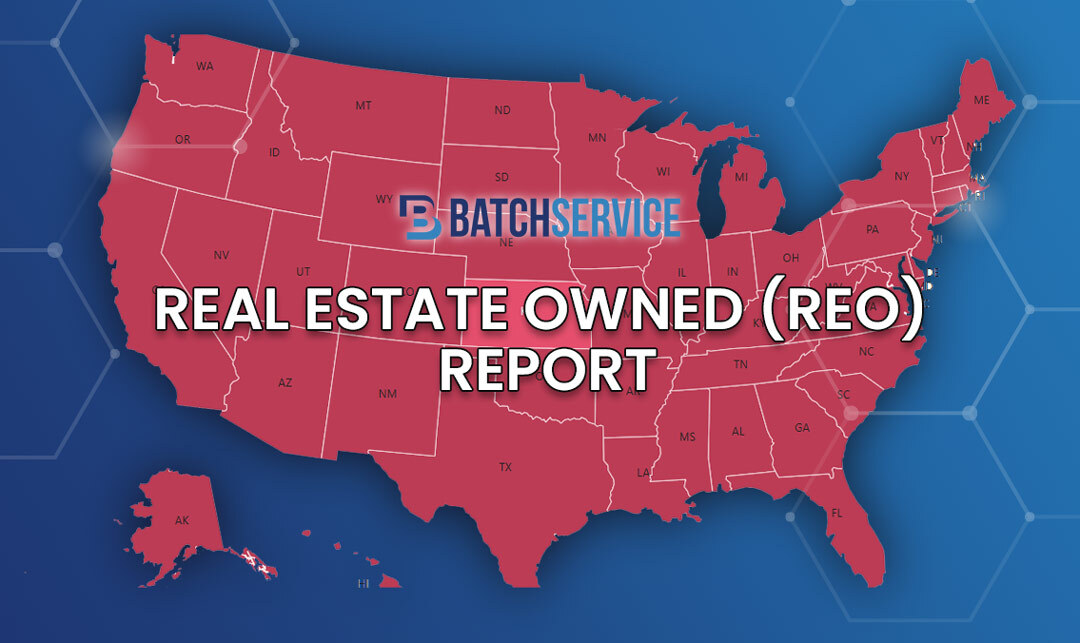Investors are now buying 33% of homes in the U.S., the highest in five years. Rising mortgage rates and affordability issues are sidelining many buyers, leaving investors to fill the gap. Here’s what you need to know:
- Small investors dominate: 91% of investor-owned homes belong to individuals with fewer than 11 properties.
- Cash purchases are key: 60% of investor buys are in cash, speeding up deals and providing liquidity.
- Focus on affordable homes: Investors target older properties priced below the national average ($455,481 vs. $512,800).
- Institutional investors retreating: Large firms are selling more than buying and shifting to build-to-rent projects.
- Rising rates hurt buyers: Mortgage rates around 6.7% add $800–$1,000 to monthly payments, making homeownership harder.
Investors are helping stabilize the market by keeping transactions flowing as financing challenges grow. However, affordability remains a major issue, with only 16% of homes within reach for the average U.S. household.
Small Investors LEAD the Housing Market (Here’s Where They’re Buying)
Investor Market Share and Trends
Investor participation in the housing market has grown significantly as market conditions continue to shift.
Historical and Current Market Share
From 2020 to 2023, investors accounted for an average of 18.5% of all home purchases, reflecting a steady level of activity in residential real estate. However, by early 2025, their presence surged dramatically, with nearly 27% of U.S. home sales – around 265,000 properties – being investor-owned. This momentum carried into Q2 2025, when the share climbed to a record-breaking 33%.
| Period | Investor Market Share | Notable Context |
|---|---|---|
| 2020–2023 (average) | 18.5% | Stable baseline for investment rates |
| Q1 2025 | 27% | Highest share in five years |
| Q2 2025 | 33% | All-time high investor participation |
This rapid increase – from 18.5% to 33% in just over a year – signals a major shift in the housing market. In 2024 alone, investor purchases rose by 9%, with 1.2 million homes acquired. These numbers illustrate how investors are stepping in to fill the void left by traditional buyers, fundamentally reshaping the market landscape. This trend becomes even more pronounced when considering the impact of rising mortgage rates.
Impact of Rising Mortgage Rates on Buyers
Starting in 2022, climbing mortgage rates began to create significant challenges for traditional homebuyers. As financing hurdles increased, many conventional buyers found themselves unable to compete. Investors, often equipped with cash reserves, capitalized on this reduced competition, increasing their foothold in the market. Their ability to act quickly and decisively in such conditions has allowed them to play a larger role in sustaining transaction activity.
Cash Purchases and Market Liquidity
Investors’ reliance on cash purchases has been a key factor in maintaining market liquidity. In 2024, 62.3% of investor transactions were made with cash – nearly double the 33.4% all-cash rate reported among all buyers. This preference for cash not only speeds up transactions but also ensures a steady flow of deals during periods when traditional financing becomes more difficult to secure.
Interestingly, the 62.3% cash purchase rate in 2024 was the lowest for investors since 2008. This suggests a shift, with more investors exploring diverse financing options. Still, the liquidity generated by cash transactions remains critical, providing sellers with dependable exit strategies even as traditional buyer activity declines.
These trends underscore the evolving role of investors in the housing market. No longer just opportunistic participants, they are becoming key players in stabilizing a market that continues to face significant challenges.
Profile of Real Estate Investors
Examining the latest market trends reveals a clear divide between small-scale individual investors and large institutional players in the real estate sector.
Types of Investors: Small vs. Large
The majority of real estate investors are small-scale operators. In fact, individuals owning between one and ten properties make up a staggering 91% of investor-owned homes, accounting for roughly 25% of all recent home purchases. On the other hand, large institutional investors – those holding 1,000 or more properties – represent less than 2.5% of purchases and control just 2% of the total market.
"The perception that institutional investors are gobbling up the nation’s housing stock is overstated." – BatchData
Recent data supports this claim. In Q2 2025, large institutional investors sold 5,801 properties but purchased only 4,069, marking their sixth consecutive quarter as net sellers. On average, investors paid $455,000 per property, which is lower than the national average of $512,800. Institutional buyers, however, spent significantly less, averaging $280,000 per property.
Geographic Distribution of Investor Activity
Investor activity shows notable differences across the country, often influenced by local market conditions. States with strong tourism industries or lifestyle appeal report investor participation exceeding 25%, while those with robust local economies see activity dip below 11%. Interestingly, about 60% of metropolitan rental-home purchases are made by small investors with ten or fewer properties. This geographic variation highlights how investors adapt their strategies based on local affordability and market potential.
Investor Methods: Renovation, Build-to-Rent, and Cash Flow
Investors employ a variety of approaches to balance liquidity and market stability, ranging from property renovations to build-to-rent developments. Institutional investors typically invest between $15,000 and $39,000 in renovations for rental properties, significantly more than the $6,300 that new homeowners spend on average in their first year.
Smaller investors tend to focus on older, lower-cost properties that need significant work. They often rely on cash purchases and renovation projects to transform distressed homes into market-ready properties. Meanwhile, large institutions are shifting their focus to build-to-rent projects, which add new housing inventory rather than competing for existing homes.
Interestingly, nearly 45% of investor sales in Q2 2025 were to traditional homebuyers. This trend underscores how investors can act as temporary caretakers of properties, especially during times when traditional buyers face challenges securing financing.
sbb-itb-8058745
Impact of Investor Activity on the Housing Market
Investor activity has reached a historic high, now making up 33% of single-family home purchases in Q2 2025. This surge has reshaped the housing market, influenced by rising mortgage rates and limited affordability, trends that have been building over time.
Replenishing Housing Stock
Despite concerns that investors might shrink market availability, the numbers tell a different story. In Q2 2025, 47% of homes sold by investors ended up in the hands of traditional homebuyers, helping families achieve homeownership. Additionally, investors are contributing to the housing supply through build-to-rent projects. Large institutions are increasingly focusing on these developments, creating new housing options without directly competing with traditional buyers for move-in-ready homes.
Affordability Challenges for Buyers
Affordability remains a significant hurdle for prospective buyers. Currently, only 16% of home listings are within financial reach for the average U.S. household, and in 54% of U.S. markets, purchasing a home now requires a six-figure income. With mortgage rates averaging 6.7%, traditional buyers face an additional $800–1,000 in monthly payments, making homeownership even more difficult.
"The situation is not going to change until we get mortgage rates back down toward 5%, or even lower."
- John Sim, Head of Securitized Products Research at J.P. Morgan
Adding to the challenge, 82.8% of homeowners in 2025 hold mortgage rates below 6%. This "rate lock effect" discourages current homeowners from selling, further tightening the already limited housing supply.
Investors as Market Stabilizers
Far from destabilizing the market, investors play a vital role in maintaining liquidity during a time of tight financing conditions. By offering cash transactions, they provide sellers with speed and certainty that traditional buyers often cannot match. This stabilizing influence becomes especially noticeable during periods of economic stress.
"The record low supply of houses on the market protects against a market crash."
- Tom Hutchens, Executive Vice President of Production at Angel Oak Mortgage Solutions
Interestingly, 25% of investor purchases in the first half of 2025 were made by small investors, showing that investment activity is not dominated by large institutions alone. These trends suggest that investor activity is more balanced than it might appear and will likely persist unless broader affordability issues are resolved. The next section delves deeper into these dynamics through data-driven insights.
Data Intelligence and Methodology
To understand real estate investor activity, it’s essential to rely on solid data collection and analysis techniques. The insights shared here are based on a combination of multiple data sources and advanced analytics, offering a detailed view of the current market landscape.
Data Sources and Analytics
This analysis primarily draws from county-level home purchase records across the United States. Specifically, Redfin‘s investigation of investor purchases in Q2 2025 uses records from 39 major metropolitan areas. Investors are identified as institutions or businesses purchasing residential real estate, with buyer names containing terms like LLC, Inc, or Trust, or through specific ownership codes.
BatchData plays a key role by integrating data from top-tier providers. Its in-house data science team combines this information with real-time feedback from over 20,000 users, ensuring a high standard of accuracy and reliability. This comprehensive dataset forms the backbone of BatchData’s deeper market insights.
BatchData‘s Role in Real Estate Market Analysis

BatchData, a leading real estate data platform, offers enterprise-grade APIs that provide access to over 1,000 data points on more than 150 million U.S. properties.
The Q2 2025 Investor Pulse™ Report by BatchData delivers valuable market intelligence on investor activity in the single-family residential housing sector. Ivo Draginov, BatchData’s Co-Founder and Chief Innovation Officer, highlighted key findings:
"While the percentage of single-family homes purchased by investors rose to a five-year high, the actual number of homes purchased during the second quarter of 2025 was 16,000 fewer than a year ago. So the relatively high percentage of home purchases by investors is at least partly due to overall home sales being weaker in Q2 2025 than they were in Q2 2024."
BatchData’s methodology integrates data from leading providers, enabling a more detailed understanding of investor behavior and market trends.
Applications of Data-Driven Insights
These data-driven insights not only confirm shifts in the investor landscape but also provide actionable strategies for those involved in the market. Real estate professionals and investors can apply these findings in several ways:
- Targeting Properties: Investors can focus on value-driven opportunities, as the average investor purchase price of $455,481 is notably below the market average of $512,800.
- Portfolio Management: Ownership data reveals that small investors with 1–5 properties dominate, holding 87% of investor-owned single-family homes. Meanwhile, those owning 6–10 properties account for an additional 4%.
- Risk Assessment: Transaction flow data shows that 45% of the 104,000+ homes sold by investors in Q2 2025 were purchased by traditional homebuyers, offering insights into market liquidity and buyer behavior.
- Geographic Strategy: By analyzing regional trends, investors can identify emerging opportunities while avoiding oversaturated markets, enabling smarter, location-specific decisions.
These analytics provide a practical framework for navigating the shifting dynamics of real estate investment, helping stakeholders make informed choices based on current trends and patterns.
Key Takeaways on Nationwide Investor Activity
The Q2 2025 data reveals a major shift in the housing market. With affordability challenges pushing traditional buyers out of the picture, investors – mainly small-scale operators who own over 90% of investor-controlled homes – are stepping in to fill the gap. The 33% investor share isn’t about speculative buying; it’s a practical response to the financing hurdles shaping today’s market, as highlighted throughout this report.
Small-scale investors are leading this change. On average, they own three properties each, making up a significant portion of the market. Contrary to the "Wall Street landlord" narrative, individual investors own 41% of all rental units, while large-scale operators with 1,000 or more homes account for just 2.1% of the inventory. This data underscores the role of smaller players rather than corporate giants in driving investor activity.
Investors are also helping to stabilize the market. With mortgage rates averaging 6.7%, many traditional buyers have been sidelined, but investors are keeping the market moving by providing liquidity through cash transactions.
Geographically, investor activity varies. States like Maine and Montana see the highest investor shares, likely due to their tourism appeal. On the other hand, places like Minnesota and Colorado, which have stronger local economies and more opportunities for traditional buyers, report the lowest shares.
Tools like BatchData have become essential for analyzing these trends. They help contextualize investor behavior within the broader challenges of today’s financing environment.
In short, this isn’t a speculative boom. Instead, it’s a necessary market adjustment, with investors playing a key role in maintaining liquidity and sustaining activity despite tough financial conditions.
FAQs
How are higher mortgage rates impacting traditional homebuyers and their ability to compete with investors?
Higher mortgage rates, now averaging 6.7% – about twice what they were in recent years – are making it much harder for traditional buyers to afford a home. Monthly mortgage payments, which used to range between $1,600 and $1,900, have jumped to $2,400–$2,800, putting homeownership out of reach for many.
This surge in costs has pushed the share of first-time homebuyers down to just 24%. Meanwhile, cash-rich investors, who don’t rely on financing, are stepping in to fill the gap. These investors are becoming a bigger force in the market, helping maintain transaction volumes and adjusting to the changing landscape.
How are small-scale investors adapting to current housing market challenges?
Small-scale investors are shifting their strategies by focusing on older, more affordable homes that often need renovations. These properties are frequently located in areas popular for tourism or lifestyle appeal. To maintain flexibility, many of these investors prioritize cash purchases, especially since traditional buyers are increasingly limited by affordability challenges. Alongside this, they’re putting money into build-to-rent projects and refurbishing existing homes, which helps expand housing options and address market needs.
How does real estate investor activity differ across the United States, and what factors drive these variations?
Investor activity across the United States varies widely, influenced by local market conditions, affordability, and economic factors. States like Maine, Montana, Alaska, and Hawaii attract high levels of investor interest. This is largely due to their strong tourism industries, appealing lifestyle options, and opportunities for affordable investments.
On the flip side, states such as Minnesota, Colorado, and Connecticut see less investor activity. These areas are characterized by robust local economies, higher homeownership rates, and a reduced reliance on rental markets.
These trends highlight how regional affordability, economic conditions, and unique market characteristics shape where and how investors choose to focus their efforts.



